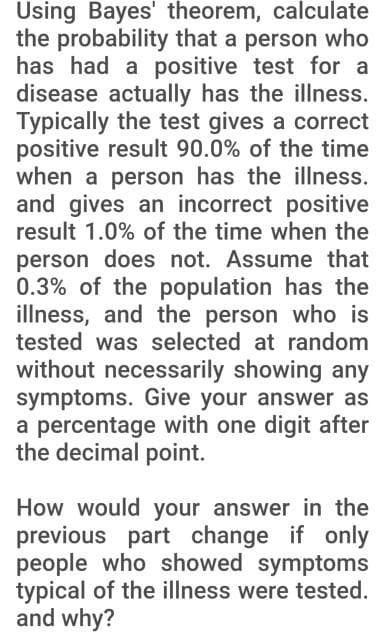Using Bayes' theorem, calculate the probability that a person who has had a positive test for a disease actually has the illness. Typically the test gives a correct positive result 90.0% of the time when a person has the illness. and gives an incorrect positive result 1.0% of the time when the person does not. Assume that 0.3% of the population has the illness, and the person who is tested was selected at random without necessarily showing any symptoms. Give your answer as a percentage with one digit after the decimal point. How would your answer in the previous part change if only people who showed symptoms typical of the illness were tested. and why?
Percentage
A percentage is a number indicated as a fraction of 100. It is a dimensionless number often expressed using the symbol %.
Algebraic Expressions
In mathematics, an algebraic expression consists of constant(s), variable(s), and mathematical operators. It is made up of terms.
Numbers
Numbers are some measures used for counting. They can be compared one with another to know its position in the number line and determine which one is greater or lesser than the other.
Subtraction
Before we begin to understand the subtraction of algebraic expressions, we need to list out a few things that form the basis of algebra.
Addition
Before we begin to understand the addition of algebraic expressions, we need to list out a few things that form the basis of algebra.
aaaanswer all with example and sketch. thank you /

Step by step
Solved in 2 steps with 2 images




